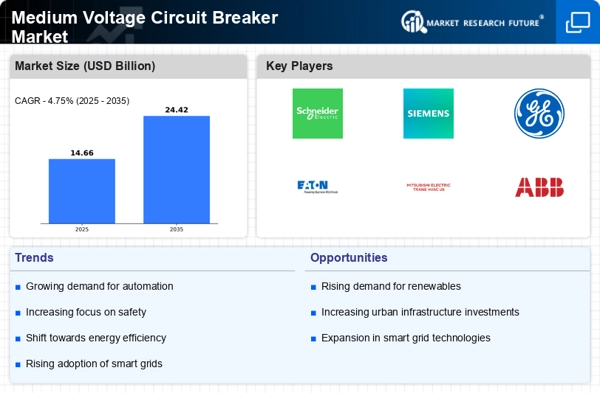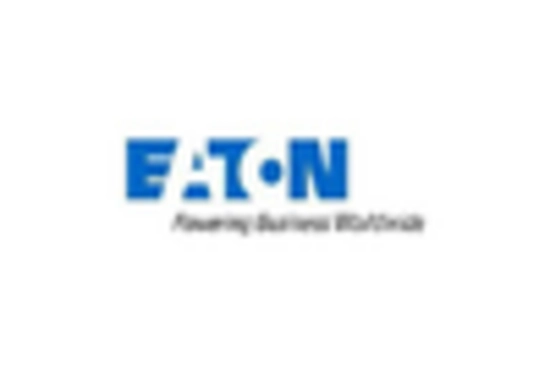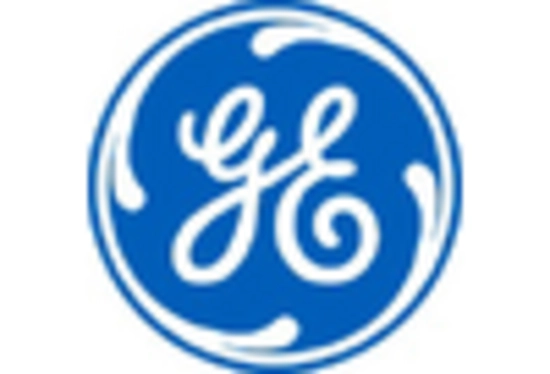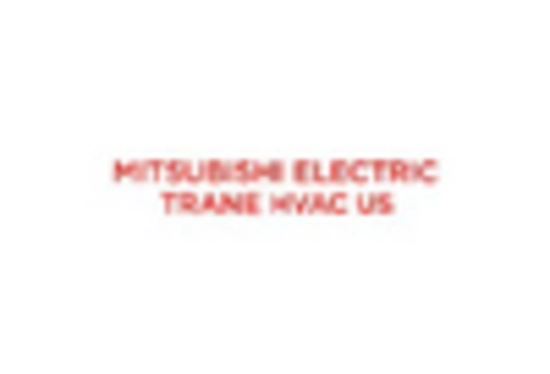The Medium Voltage Circuit Breaker Market is currently characterized by a dynamic competitive landscape, driven by increasing demand for reliable power distribution and the transition towards renewable energy sources. Key players such as Schneider Electric (France), Siemens (Germany), and ABB (Switzerland) are strategically positioned to leverage innovation and technological advancements. Schneider Electric (France) focuses on digital transformation and sustainability, aiming to enhance energy efficiency through smart grid solutions. Siemens (Germany) emphasizes regional expansion and partnerships, particularly in emerging markets, to bolster its market presence. ABB (Switzerland) is heavily investing in research and development to pioneer next-generation circuit breaker technologies, thereby shaping the competitive environment through a commitment to innovation.
In terms of business tactics, companies are increasingly localizing manufacturing to reduce costs and enhance supply chain efficiency. The market appears moderately fragmented, with several players vying for market share. However, the collective influence of major companies like General Electric (US) and Eaton (Ireland) is notable, as they implement strategies that optimize their operational capabilities and strengthen their competitive positions.
In August 2025, General Electric (US) announced a strategic partnership with a leading renewable energy firm to develop integrated medium voltage solutions tailored for wind and solar applications. This collaboration is likely to enhance GE's product offerings and align with the growing trend towards sustainable energy solutions, positioning the company favorably in a market increasingly focused on environmental considerations.
In September 2025, Eaton (Ireland) unveiled a new line of eco-friendly medium voltage circuit breakers designed to minimize environmental impact while maintaining high performance. This launch not only reflects Eaton's commitment to sustainability but also indicates a broader industry trend towards environmentally conscious product development, which could resonate well with customers prioritizing green technologies.
In July 2025, ABB (Switzerland) completed the acquisition of a technology startup specializing in AI-driven predictive maintenance solutions for circuit breakers. This acquisition is significant as it enhances ABB's capabilities in digitalization, allowing for improved reliability and efficiency in power distribution systems. Such strategic moves underscore the importance of integrating advanced technologies into traditional markets, thereby fostering innovation.
As of October 2025, the competitive trends in the Medium Voltage Circuit Breaker Market are increasingly defined by digitalization, sustainability, and the integration of artificial intelligence. Strategic alliances are becoming pivotal, as companies seek to enhance their technological capabilities and market reach. The competitive differentiation is likely to evolve from traditional price-based competition towards a focus on innovation, technology integration, and supply chain reliability, reflecting the industry's shift towards more sophisticated and sustainable solutions.


















Leave a Comment